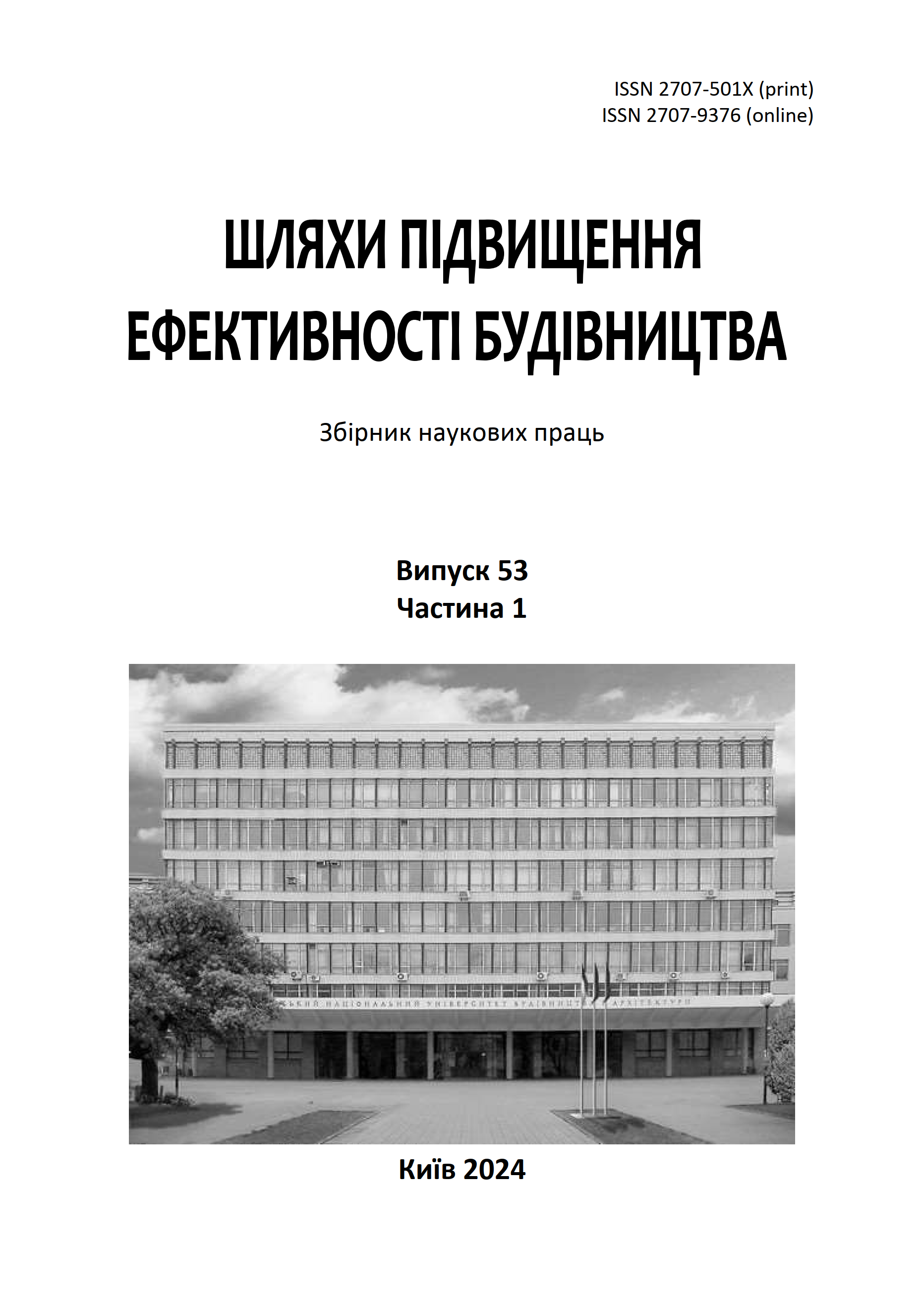The quantum model of the development of intelligence as a theoretical basis of the theory of technological development. Construction technology life cycles
DOI:
https://doi.org/10.32347/2707-501x.2024.53(1).3-20Keywords:
construction technologies, technological progress, quantum model of intelligence development, life cycle of technologiesAbstract
The article outlines the main provisions and analyses the main models of intelligence development using a historical approach. A quantum model of intelligence development is proposed, which reveals the logical essence of intellectual processes occurring at the levels of individual and integral intelligence. Individual and integral intelligences can remain in stationary states for a long time, in which the intelligence and the system of intelligences have "volumes". Any change in the "volume" of intelligence occurs only with a complete transition from one state to another, the mechanism of intellectual transitions is a discrete process. It is shown that the pattern of growth of the "volume" of integral intelligence obeys the exponential law. The volume of integral intelligence increases like an intellectual flash; the process of development of integral intelligence is discrete, cyclical and has a constant parameter – the lag of integral intelligence, which belongs to the interval of 6–8 years. The relationship between the development cycles of integral intelligence (its outbursts) and "Kondratiev's big cycles" is established. For each lag of integral intelligence, its "volume" increases, relative to the initial level, by the value of the exponent, and each "great Kondratiev cycle" has from 6 to 8 lags of integral intelligence, which precede waves of technical inventions and their practical application in the form of innovations, that is, innovative products and technologies. The development of construction technologies is a continuous and irreversible process of increasing their effectiveness over time, and is generally described by s-shaped curves that are tangent to the contour curve characterizing the integral effectiveness of public labor in the construction industry. Technologies have their own life cycles, consisting of stages that differ in the level of relative effectiveness, namely: the stage of introduction and initial diffusion, the stage of maximum diffusion, the stage of rationalization, the stage of obsolescence. The existence of technologies at the stage of aging is impractical.
References
Jantsch, E. (1967). Technological Forecasting in Perspective. A Framework for Technological Forecasting, its Techniques and Organisation. OCDE, Bureau des Publications, 2 rue Andre-Pascal, 75 Paris, 1967. URL: http://en.laprospective.fr/dyn/anglais/memoire/prevtechen.pdf
Nye, Mary Jo. (1984).Scientific Decline: Is Quantitative Evaluation Enough? Isis, 75, 697–708. DOI:10.1086/353650.
Park, M., Leahey, E., Funk, R. J. (2023). Papers and patents are becoming less disruptive over time. Nature, 613, 138–144. DOI:10.1038/s41586-022-05543-x.
Thompson, D. (2023). The Consolidation-Disruption Index Is Alarming. Science has a crummy-paper problem. The Atlantic. URL: https://www.theatlantic.com/newsletters/archive/2023/01/academia-research-scientific-papers-progress/672694/
Lowe, D. (2023). A Decline in Scientific Innovation?. Science. URL: https://www.science.org/content/blog-post/decline-scientific-innovation
Cecílio, Ana Beatriz Garcia Amaral, et al. (2020). Inovações tecnológicas na engenharia civil. Revista Científica Multidisciplinar Núcleo do Conhecimento. 12, Vol. 10, 54–71. URL: https://www.nucleodoconhecimento.com.br/гражданское-строительство/технологические-инновации
Grabovetskyi, B.E., Pitik, O.V. (2013). Strategic planning: essence, predictive and analytical support. Bulletin of the Khmelnytskyi National University, No. 4, Vol. 1, 48–52. URL: https://biem.sumdu.edu.ua/images/stories/docs/3340/2013_4_1.pdf
Osipov, A.F. (2013). Theoretical basis of sustainable operation of technological systems. Mistobuduvannya ta teritorialne planuvannya, 48, 321–328. URL: ttps://repositary.knuba.edu.ua/items/9e1ba572-3aa9-4281-949a-b54373f3efa0
Osipov, A.F. (2016). Adaptivnye dinamicheski transformiruyushiesya tehnologicheskie sistemy. Metodologiya proektirovaniya organizacionno-tehnologicheskih reshenij rekonstrukcii zdanij: monografiya. K.: CP «Komprint». 364 s.
Osipov, A.F. (2023). Introduction to the theory of sustainable operation of technological systems for building reconstruction. Shliakhy pidvyshchennia efektyvnosti budivnytstva v umovakh formuvannia rynkovykh vidnosyn, 52(1), 123-137. DOI: https://doi.org/10.32347/2707-501x.2023.52(1).123-137
Kondratiev, N.D. (1935). The Long Waves in Economic Life. Review of Economics and Statistics, 17, №7, 105-115.
Isenson, R.S. (1966). Technological Forecasting in Perspective. Management Science, 3, 70-83.
Hartman, L.M. (1966). Technological Forecasting. Multinational Corporate Planning (GA. Steiner and W. Cannon Eds). New York: Crowel-Collier.
Akaev, A.A., Rudskoy, A.I. (2017). Convergent ICTs as a key factor in technological progress in the coming decades and their impact on global economic development. International Journal of Open Information Technologies, vol. 5, no. 1.
Downloads
Published
How to Cite
Issue
Section
License

This work is licensed under a Creative Commons Attribution 4.0 International License.
Authors who publish with this journal agree to the following terms:
- Authors retain copyright and grant the journal right of first publication with the work simultaneously licensed under a Creative Commons Attribution License that allows others to share the work with an acknowledgement of the work's authorship and initial publication in this journal.
- Authors are able to enter into separate, additional contractual arrangements for the non-exclusive distribution of the journal's published version of the work (e.g., post it to an institutional repository or publish it in a book), with an acknowledgement of its initial publication in this journal.
- Authors are permitted and encouraged to post their work online (e.g., in institutional repositories or on their website) prior to and during the submission process, as it can lead to productive exchanges, as well as earlier and greater citation of published work (See The Effect of Open Access).

